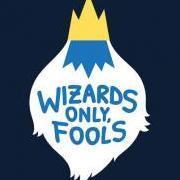Leaderboard
Popular Content
Showing content with the highest reputation on 01/10/2021 in all areas
-
1 point
-
Cyans have more psilocin, which is much less stable than psilocybin, whilst cubes have more stable psilocybin than psilocin.1 point
-
Fookin get I'm into ya while theys fresh. They are weak af dried. Golden Lovins fresh.1 point
-
1 point
-
Got a load of Floribunda seed - this is a long-broad phyllode type but still has bright yellow/orange flowers packets of 100 for $15 including standard postage PM me1 point
-
Amphibians on Earth - by Shy Violet Amphibians evolved from fish about 400 million years ago, when the amount of dry land on Earth increased greatly due to climatic conditions at the time. Certain fish, (possibly Tiktaalik Rosea) adapted to these changing conditions by gradually developing limbs to crawl and lungs to breathe with. Such organisms came to be known as amphibians, a name that means “double life”. Many of the species that developed during this period no longer exist. The groups of amphibians that survived to the present day can be traced back no further than 200 million years. The word amphibian itself comes from the Greek amphibios, which means “living both in water and on land”, which refers to their distinctive feature as the only vertebrate group that generally possess an aquatic phase of life (larvae), and a terrestrial one (adulthood). This renders amphibian populations sensitive to alterations in both environments, leaving them in a particularly challenging ecological situation. Because amphibians are highly sensitive to changes in their surrounding environmental conditions (i.e. temperature, humidity, water and soil pH, for example) they are considered indicator species. Given this, healthy amphibian populations are usually a sign of healthy ecosystems. On the other hand, as their populations and diversity decrease, so do the number of healthy ecosystems around the world, possibly signaling the loss of numerous other living species. In such a manner, amphibians give a rough idea of the local and global health of the planet. According to the International Union for Conservation of Nature (IUCN), which is the most comprehensive information source on the status of wild species and their links to livelihoods, and who publish the “Red list”, which assesses the extinction risk of species, in the last 25 years, more than 120 species of amphibians have disappeared. The planet's amphibian species are becoming extinct at a thousand times higher rate than normal, according to the study by more than 500 scientists from over 60 nations that have contributed to the Global Amphibian Assessment: http://www.natureserve.org/conservation-tools/projects/global-amphibian-assessment This is an alarming circumstance, especially considering that modern amphibians have been on the planet for more than 200 million years, even surviving the dinosaur extinction and all subsequent natural global climate changes, including extreme droughts and ice ages. However, the current rate of amphibian extinctions might be due to a particular sensitivity to anthropogenic environmental disturbances. Scientists have theorized that this alarming decline in the numbers of amphibians and amphibian species around the world is due to a number of factors: pollution of freshwater ecosystems, the destruction of amphibian habitat by ever-spreading human populations, and possibly increased ultra-violet radiation due to ozone depletion. With regard to the toad in question on this forum, Incilius Alvarius, it is a large toad in the family Bufonidae that can grow up to 7.5 inches long and live up to five to 15 years in the wild. Its presence on the planet dates back to just prior to the formation of the Sonoran Desert roughly 8-10 million years ago to which its natural habitat almost exclusively coincides with. In the regions it is native to, Incilius Alvarius is protected by state and federal law. None of the states in which Incilius Alvarius is, or was native to legally allows a person to remove the toad from the state. In New Mexico and Arizona it is unlawful to capture, collect, intentionally kill or injure, posses, propagate, sell or transport this amphibian. In Sonora, in order to capture or collect any amphibian, a federal permit is required. Based on the IUCN’s Red List assessment of the status of this toad species conducted back in 2004, Incilius Alvarius is categorized as a “least concern” species, based on its “wide distribution, tolerance of a degree of habitat modification, presumed large population and because it’s unlikely to be declining fast enough to qualify for listing in a more threatened category.” Historically the Incilius Alvarius toad was found from southeast California, eastward across much of southern Arizona into extreme southwestern New Mexico, and southward through much of Sonora to northwestern Sinaloa. No authors have noted declines of the Incilius Alvarius Toad in Sonora, however, in 2014 Yaqui Tribal members said the species had declined in the vicinity of Vicam and Bácum, and surveys at various sites in that region by retired biologist J.C. Rorabaugh and others in July 2014 failed to detect the species, although other anurans expected in the area were commonly encountered. This called the attention of a field biologist who has taken an interest to develop proactive measures to prevent the decimation of their populations. The species is monitored yearly in Arizona and no declines have been noted, but biologists have explained that the human impact would not be noticed immediately, but rather a few years down the road, when it may be too late to take proactive corrective action. Since 2012, Incilius Alvarius has been undergoing ever-increasing human environmental pressure. The popularity of the naturally derived compound from this unique toad, its venom, has grown as the result of particular individuals who, although with good intentions to help people, have overexposed this once obscure little desert dweller in an exponentially global way, thus placing the toad populations in a precarious situation. It is important to note that none of the states in which Incilius Alvarius is endemic to, legally allows a person to remove the toad from the state. In New Mexico and Arizona it is unlawful to sell or transport this amphibian across state and international borders. In Sonora, although you need a federal permit in order to capture, manipulate, or collect the venom, laws are a bit more malleable in Mexico than they are in the United States, which has resulted in vulnerable populations of toads south of the border. The Mexican state of Sonora has seen an influx of foreign visitors over the past five years who, after learning about the unique feature of this toad through media outlets such as the Vice episode that documented the use of the toad-derived psychoactive compound, have decided to take it upon themselves to journey to Sonora, to places like Magdalena, which are easily accessed after crossing the border from Arizona into Mexico to get their own supply of the toxin. With the continued popularity of this underground little creature partly through the release of films such as Episode 1 of the series titled “Shamans of the Global Village”, which features details such as how to identify the toad, where to find the toad and how to extract the venom, the threat posed for the continued existence of this toad is real and significant. With more and more people each year going to the Sonoran desert from faraway places such as Australia and Spain to collect venom to take back home and, in some instances, actually removing the toads from their natural habitat, the viability of the species is being put at risk, and with it the health of the overall ecosystem in the Sonoran desert. Even though Incilius Alvarius has a large reproductive capacity with large toads laying clutches of up to 8000 eggs each, their livelihood is challenged when the uninformed see it as a harmless action to remove the toad from its habitat. According to amphibian experts, when big specimens are removed from their habitat, the reproductive capacity of the species can be significantly compromised, and indeed lead to the decimation of an entire population in a given area. Although amphibians are very susceptible to changes in their environment, they are also incredibly resilient. I think that while it may be fair to say that no harm has been done, we can take proactive action and develop a deeper attitude of reverence, gratitude and respect for the toads by simply leaving them alone. I feel it would be wise of all practitioners to stick to using 5-MeO-DMT in its synthesized form for their healing work, which is so valuable on this beautiful planet of ours. As someone who is very interested in seeing clinical outcomes as well as mechanism of action studies conducted with this molecule, I fear that the wave of neoshamanism that has been fostering irresponsible and unsustainable use of this finite natural resource could effectively shut down our chance to get scientific work off the ground. I would like to make a call to action to make sure we act out of the wisdom of our hearts, and not the nearsightedness of our mind. That we move forward with discernment and congruence, and not operating out of our blind spots. At the rate things are going globally for all amphibians and locally for Incilius Alvarius, it would be wise for us to assume the worst case scenario and foresee that the species may well be decimated in the wild over the next decade if we keep up what we are currently doing as a community and continue to tolerate and turn a blind eye to the types of abuse going on – with the toads themselves, with unethical practices, with the incongruence of our actions, with the profit model that is commercializing this sacred gift of the Earth. Incilius Alvarius has been around the planet for 10 million years, can you imagine how devastating it would be if in a matter of 10, 20 or 30 years, humans came to wipe out what nature has so elegantly crafted in such a beautiful and delicate balance? The dissonance between what people say and what they do is concerning. Please, let’s all wake up and get it right. What a wondrous opportunity this could be to rise above ignorance, greed, and stubbornness. If it wasn’t so tragic, it would be almost comical to think that while pursuing enlightenment and healing for the world, we are compromising the viability of the little peaceful creature we claim to love so. What a powerful lesson the toad is trying to instill in us, don’t you think? It is almost like a cosmic test… let’s not fail this, let’s rise, use our deepest human wisdom and transcend the pattern of anthropocentrism and narcissistic tendencies that have characterized our species. “One touch of nature makes the whole world kin”. -William Shakespeare1 point
-
Hi Wile E, How's it going !? In regards to the synthetic 5-Meo/Bufo secretion conversation, did you see where he discusses the relative ease of synthesis from other precursors or novel pathways to synthesis (albeit also ones that preserve the entourage effect of Bufo secretion which I think is important as in my experience there definitely feels like a definitive qualitative distinction). He's done a pretty good job of following up on some mistakes he made in the toad episode of Pharmacopiea (mostly concerning the identity of Al Most around which he was duped) new episode released a few days ago too. Also check out the 'Ethics & Ecology' section of the 5meodmt.org forum as there is some really amazing research contributions there: especially posts by 'Shy Violet' like the one entitled Amphibians on Earth (I'll copy and paste it below for those not members of the 5-Hive forum). Also the 'save a toad exploit a chemist' hashtag was created by Malin Uthaug, the author of the PsychedelicsToday article and she posts on the forum a bit as well as at Psychedelics Today. There's another good article over at DoubleBlind called 'Is it Worth Kidnapping Toads to Extract their Psychedelic Venom—When You Could Make it In a Lab?' cheers, Flux1 point
-
Pastures and cattle are not natural environments in Australia, curious to hear how they could be competing with vulnerable species..1 point
-
U2 is a Good example . They have a massive following and have received countless awards and nominations , their concerts are guaranteed sell outs wherever they go .. but to me, they sound like fucking dog shit .1 point







